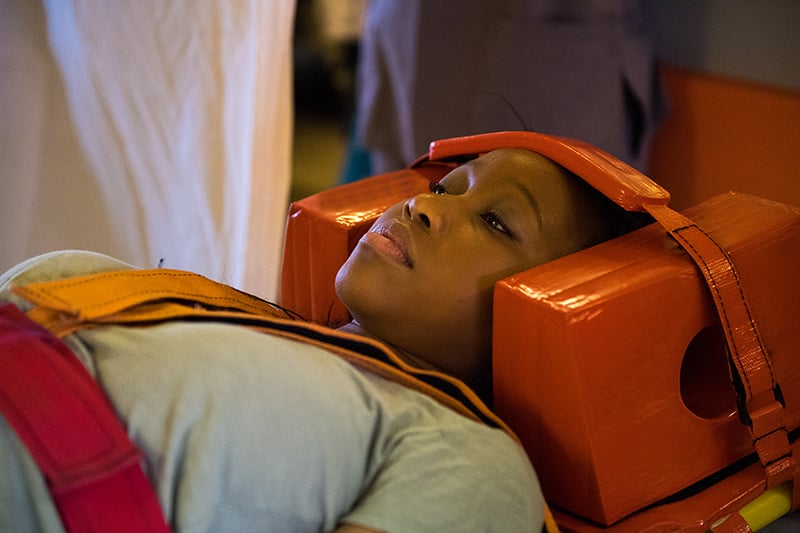To Infinity and Beyond: Earthbound Emergency Medicine
Molly Sturlis, OMS-IV – Midwestern University Arizona College of Osteopathic Medicine
EMRA MSC Southeast Coordinator, 2021-2022
Many students are drawn to the field of Emergency Medicine for similar reasons: a desire to treat a broad spectrum of acute illness, to help people in dire situations, to use those big ‘ol noggins to potentially figure out what may be wrong with someone before they’ve gotten care and a diagnosis elsewhere, and perhaps even an interest in practicing in environments void of the luxuries usually found in the department. It is that last sentiment that often inspires people not unlike myself to look into career possibilities within wilderness and expedition medicine, but aerospace medicine is a slightly more obscure field that you may not be aware of. There are a select number of residency/fellowship training opportunities in the field, which may be perfect for an ambitious emergency physician with their eyes to the skies. A background in EM is highly beneficial when entering the world of aerospace medicine, as it indicates a broad knowledge base, competency in basic surgical skills, and of course adept management of critical illnesses and injuries—proficiencies that are all necessary in any hostile environment, let alone outside the bounds of our home planet.
According to the Aerospace Medical Association, “Aerospace medicine concerns the determination and the maintenance of the health, safety, and performance of persons involved in air and space travel . . . Areas of interest range from space and atmospheric flight to undersea activities.” While we might still be a ways away from Zenon-girl-of-the-twenty-first-century-level commercial space tourism, and with it the necessity for a fleet of space-suited docs, there is still an imperative role for physicians to play on Earth when it comes to ensuring the health, safety, and performance of those who do fly. “Flight surgeon” is a term used primarily by the military and NASA to apply to physicians, surgeon or not, who care for persons involved in aviation including pilots, astronauts, and crewmembers. Roles of a flight surgeon include identifying and reacting to aviation stressors, making diagnoses and treatment plans, medically training crewmembers, and contributing to research in aerospace medicine.
Unsurprisingly, the bulk of aerospace medicine is preventative and involves ensuring that crewmembers are physically and psychologically fit to fly. This may be a little less exciting concerning earthbound flight, but spaceflight necessitates a variety of medical challenges, given its inherent physiologic effects and an environment so extreme that the word “austere” hardly can do it justice. Common practice topics include physiologic changes due to acceleration and deceleration, bone and muscle loss, reduced cardiac function, hypoxia, radiation exposure, and of course the psychological toll. You can learn more about being a NASA Flight Surgeon here.
If the thrill of being a flight surgeon isn’t quite enough for you, consider the fact that humans are continuously inhabiting the International Space Station and NASA is anticipating manned missions to Mars in the 2030s as well as some extended lunar missions. Ground-based medical support just won’t cut it when facing the need for treating acute medical conditions in a scenario where prompt return to Earth is not an option. Crewmembers are usually around 45-years-old when they fly, meaning some of your classmates or the residents and early attendings you got the chance to work with may be Mars-bound in a decade. Of course, if being an astronaut is your dream, understand the gravity (pun intended) of competing against tens of thousands of other applicants. You can read more about astronaut requirements here.
There are currently five accredited aerospace medicine residencies in the US, often lumped with Occupational and Preventative medicine, however, they require having completed an intern year first. Even more preferable is a candidate who has already completed residency in another broad specialty, such as emergency medicine, family medicine, or internal medicine, and even ophthalmology, ENT, and psychiatry. Many aerospace physicians first underwent military careers, where they served as military flight surgeons. Of the five accredited residencies, two are military, one at Wright-Patterson Air Force Base in Ohio, and the other at the Naval Medical Institute in Florida. The three civilian programs are at Wright State University, the University of Texas Medical Branch at Galveston, and Mayo Clinic.
For interested students, be aware that NASA offers an Aerospace Medicine Clerkship twice per year in October and April, with respective application deadlines in June and December. SpaceX also advertised one last year, so keep that on your radar potentially for the future. Be aware that these are highly competitive rotations slots and are also open to residents and attending physicians and your selection will require a strong demonstration of commitment and contribution to the field of aerospace medicine. Consider also checking out the Aerospace Medical Association (AsMA) and the Aerospace Medicine Student and Resident Organization (AMSRO) websites and becoming a member to stay up to date on events, news, networking opportunities, etc.
You can check out more EMRA info on aerospace medicine fellowships here, as well as this EM Resident article.
References:
- Hodkinson PD, Anderton RA, Posselt BN, Fong KJ. An overview of Space Medicine. British Journal of Anaesthesia. 2017;119:i143-i153. doi:10.1093/bja/aex336
- Kuypers MI. Emergency and wilderness medicine training for physician astronauts on exploration class missions. Wilderness & Environmental Medicine. 2013;24(4):445-449. doi:10.1016/j.wem.2013.03.024
- Space medicine: A new frontier for aspiring physicians. AAMC. https://www.aamc.org/news-insights/space-medicine-new-frontier-aspiring-physicians. Published September 27, 2016. Accessed November 17, 2021.
- Stewart LH, Trunkey D, Rebagliati GS. Emergency medicine in space. The Journal of Emergency Medicine. 2007;32(1):45-54. doi:10.1016/j.jemermed.2006.05.031
Related Content


Apr 23, 2020
Heart of EM: Protecting Your Greatest Investment
Doctors wouldn't think of going without malpractice coverage, but far too many fail to insure themselves against an even more expensive risk. Do yourself and your loved ones a favor and get your disability and life insurance in place STAT!





